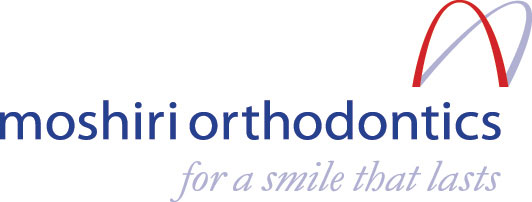Most people think orthodontic treatment needs to start in the teens—once someone’s permanent teeth have already come in. However, recent advances in the study of child development have changed that. The American Association of Orthodontists now recommends that every child receive an early orthodontic evaluation between the ages of 7 and 9.
That doesn’t necessarily mean they child will need braces at 7 years old, just that an orthodontist should evaluate the child to check for potential problems and decide if early orthodontic treatment is necessary. The orthodontist will identify problem areas and monitor and a timeline for future treatment. Where early orthodontic treatment is necessary, the child will be able to get their treatment before their jaw development makes it harder to fix.
When it comes to guiding a child’s oral health, sooner is better than later.
Why Should You Consider Early Orthodontic Treatment at 7 Years Old?
By age 7, the first adult molars have erupted, establishing a child’s bite. That means an orthodontist can evaluate the alignment of the teeth—front-to-back and side-to-side. The orthodontist will look for:
• Buck teeth: the upper front teeth sticking way out of line
• Deep bite: the upper teeth covering the lower teeth
• Underbite: the upper teeth fitting inside the arch of the lower teeth
• Overlapped teeth: the teeth having too much or too little space in certain areas
• Misaligned front teeth: the spaces between the lower two front teeth and the upper two front teeth not lining up
• Crossbite: the lower teeth not fitting properly inside the upper teeth
• Missing teeth: some baby teeth never developing, or no permanent teeth coming down
• Double teeth, extra teeth, or malformed teeth
Typically, there’s usually no need to begin early orthodontic treatment—such as braces—at 7 years old. However, early orthodontic treatment may be necessary if a child already shows some of the following symptoms:
• Problems speaking
• Difficulty chewing
• Abnormal bite development
• Clicking or popping in the jaw
• Permanent teeth erupting into the mouth crowded or overlapped
• A thumb sucking problem
• Grinding teeth
• Issues biting into the cheeks or the roof of the mouth
By making sure your child gets an early evaluation, you’re giving them the best chances for a healthy jaw and an attractive smile.
The Benefits of Early Orthodontic Treatment
Early orthodontic evaluation helps orthodontists catch potential problems before they become real issues. That way, the orthodontist can solve them faster and with simpler methods, reducing the overall treatment time and any discomfort for the child.
Here are some benefits of early orthodontic treatment for your 7-year-old:
1. Creating Room for New Teeth
As your child’s permanent teeth come in, their mouth may get crowded. The teeth may erupt at odd angles and out of alignment with other teeth. Early orthodontic treatment can create the space new teeth need to grow.
That process is much easier while permanent teeth are still coming in. If you wait until all the permanent teeth are already crammed together in your child’s mouth, more teeth will need to be moved—and even extracted—making the process more complicated and uncomfortable for the child.
2. Addressing Other Potential Dental Issues
Your child may experience more dental problems than just crowding teeth. For example, symptoms such as difficulty chewing or speaking, mouth breathing, a jaw shifting or protruding, or an inability to close their lips comfortable could all be red flags.
That means it’s time for an orthodontist appointment—the sooner the better.
3. Instilling Proper Oral Hygiene Habits
Orthodontists can help reinforce good habits parents have been preaching all along. For example, if a child is reluctant to brush their teeth or continues to suck their thumb, an orthodontist can explain why those are serious issues and the problems they can cause.
It’s just a fact that kids are more prone to listen to authority figures outside their immediate family—even if that authority figure is saying the exact same things that their parents already were.
4. Getting an Early Start on the Best Smile
As your child gets older, they’re likely to become self-conscious about their crooked teeth or other aesthetic issues. By addressing those problems at an early change, your child can have a beautiful smile ready to go long before they have to worry about posing for prom photos, performing on stage, or running for class president.
5. Planning for the Ideal Early Orthodontic Treatment
Even though braces can be worn at any age, there is an optimal time for early orthodontic treatment. It varies from one child to the next, but it’s usually sometime before the child stops growing.
An early orthodontic evaluation gives ample time to plan for the right treatments at the right time.
By bringing your child in for an orthodontic evaluation when he or she is around the age of 7, you’ll be able to collaborate with an orthodontist in planning for braces. In most cases, planning for braces involves visiting your orthodontist every few months for follow-up appointments to keep close tabs on the development of the child’s teeth.
And while braces at 7 years old isn’t exactly common, it also isn’t out of the question.
6. Peace of Mind
You might look at your child’s smile and wonder if that crooked tooth is going to cause major problems down the road. Maybe you’re worried about your child’s thumb sucking habit—and if they’re ever going to quit on their own.An orthodontist can address these issues—and others—during your child’s early evaluation. You can get the answers you need to for true peace of mind about your child’s oral health.
Your child probably doesn’t need braces at 7 years old—but it’d be nice to know if they will later.
Sounds Great. Now What?
If you’ve weight pros and cons of early orthodontic treatment and you’re ready to set your child on the path to greater oral health and a smile that lasts, here’s what you do:
Go ahead and schedule an early evaluation with an orthodontist you can trust. The orthodontist will give your child’s teeth a thorough examination—and ought to examine their jaw and bite alignment as well. The orthodontist may even take photographs and digital X-rays to begin their orthodontic record.
Then, they can tell you if any early orthodontic treatment will be necessary. If it is, they can recommend a timeline for the best results.
No matter what, an early evaluation will leave you better prepared for the best possible orthodontic care.
Maybe We Can Help?
At Moshiri Orthodontics, we do everything we can to give every child the ideal patient experience. We provide a warm, friendly, and even fun environment. Then, we make sure any treatment they receive is as pleasant as possible. If your child does end up needing braces at 7 years old, we’ll give them the best patient experience we can.
When your child is evaluated by our team, you can bet we will provide the most in depth consultation around. We offer continued observation after your first visit so we can monitor any developing abnormalities as your child grows.If you’re interested in learning more about how we can provide your child with the most comprehensive care and proactive early orthodontic treatment, ensuring the best possible development of the bite and smile as they grow.
Book Your Complimentary Early Evaluation Today
Most people think orthodontic treatment needs to start in the teens—once someone’s permanent teeth have already come in. However, recent advances in the study of child development have changed that. The American Association of Orthodontists now recommends that every child receive an early orthodontic evaluation between the ages of 7 and 9.
That doesn’t necessarily mean they child will need braces at 7 years old, just that an orthodontist should evaluate the child to check for potential problems and decide if early orthodontic treatment is necessary. The orthodontist will identify problem areas and monitor and a timeline for future treatment. Where early orthodontic treatment is necessary, the child will be able to get their treatment before their jaw development makes it harder to fix.
When it comes to guiding a child’s oral health, sooner is better than later.


